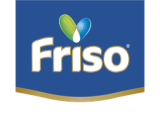
Navigating Through the 3rd Trimester of Pregnancy
In this article, we shall focus on the nutritional aspects during the third trimester, and the exercises recommended during this stage of pregnancy.
Nutritional needs are high at this stage of pregnancy to support the rapidly developing fetus. Therefore, a nutrient-dense diet is important. The average fetal weight is about 1.2-1.3kg at 28 weeks of pregnancy (the beginning of third trimester), and by birth, the average infant weight typically doubles to 3.0-3.3kg. A balanced, healthy diet is important, particularly the following nutrients:
- Calcium
The skeletal system of the baby develops quickly at this stage and the calcium requirement is high. 1000mg/day is recommended, which can be met through consuming calcium-rich foods like dairy, nuts, almond, ikan bilis, or calcium supplements if necessary.
- Iron
Iron is essential to ensure a healthy level of production of red blood cells, which transport oxygen to the rest of the body. It also plays a key role in various cellular functions, including energy production, metabolism, immune response, and antioxidant defense. The demand of iron doubles during pregnancy to about 27mg/day. This can be met by consuming more iron-rich food like red meat, liver, and certain types of seafood like oysters, clams, salmon, sardines and tuna. Iron from plant-based sources may have lower iron content and be less readily absorbed by the gut.
*As calcium and tannins can reduce iron absorption, it is recommended to consume any food or drinks high in calcium or tannins 1-2 hours apart from iron supplements.
- Protein
A higher protein intake would be helpful, aiming at an upper range of 70-100g/day or 1.1g/kg of pre-pregnancy weight. It is essential for the development and growth of fetal organs, as well as to support maternal physiological changes needed for delivery and lactation.
- Omega-3 fatty acids, particularly DHA (docosahexaenoic acid)
This group of fatty acids is important for the fetal brain/eye development, as they help in the formation of nerve fibers in the nervous system. Hence, it is beneficial for the cognitive and visual development of the fetus and young children. It is important to understand that DHA cannot be produced by our body and needs to be obtained externally from diet or supplements.
Rich sources of DHA include fatty fish such as salmon, sardines and anchovies, with 2-3 servings/week. Plant-based sources are more limited - algae oil could be a direct source, while walnuts/chia seeds provide limited amounts. There are also many fortified foods such as eggs, milk and yogurt as well as prenatal supplements that are widely available and should be considered to meet daily needs.
Many types of fortified foods e.g. eggs, milk, yogurt, and prenatal supplements are easily available and should be considered.
It is important to take note of a few precautions:
- Avoid high intensity or high impact/contact exercises.
- Avoid lying flat on the back for long periods as this position may reduce blood flow to the womb and baby.
- Avoid heavy weightlifting so as to not overtax the pelvic floor and core muscles.
- Sufficient hydration, frequent resting intervals and light clothing are essential.
- Most importantly: Listen to your body and do not overexert!
Recommended exercises are walking, swimming, stationary cycling, and low impact aerobics to help in the cardiovascular function. Prenatal Yoga/pilates may also be beneficial for the core muscle and joint flexibility. Pelvic floor exercises are also helpful and may help in the second stage of labor and postnatal recovery.
I hope the above information is useful and wish you a happy delivery journey soon.
*This is an independent publication written by the doctor and not a paid sponsorship.



